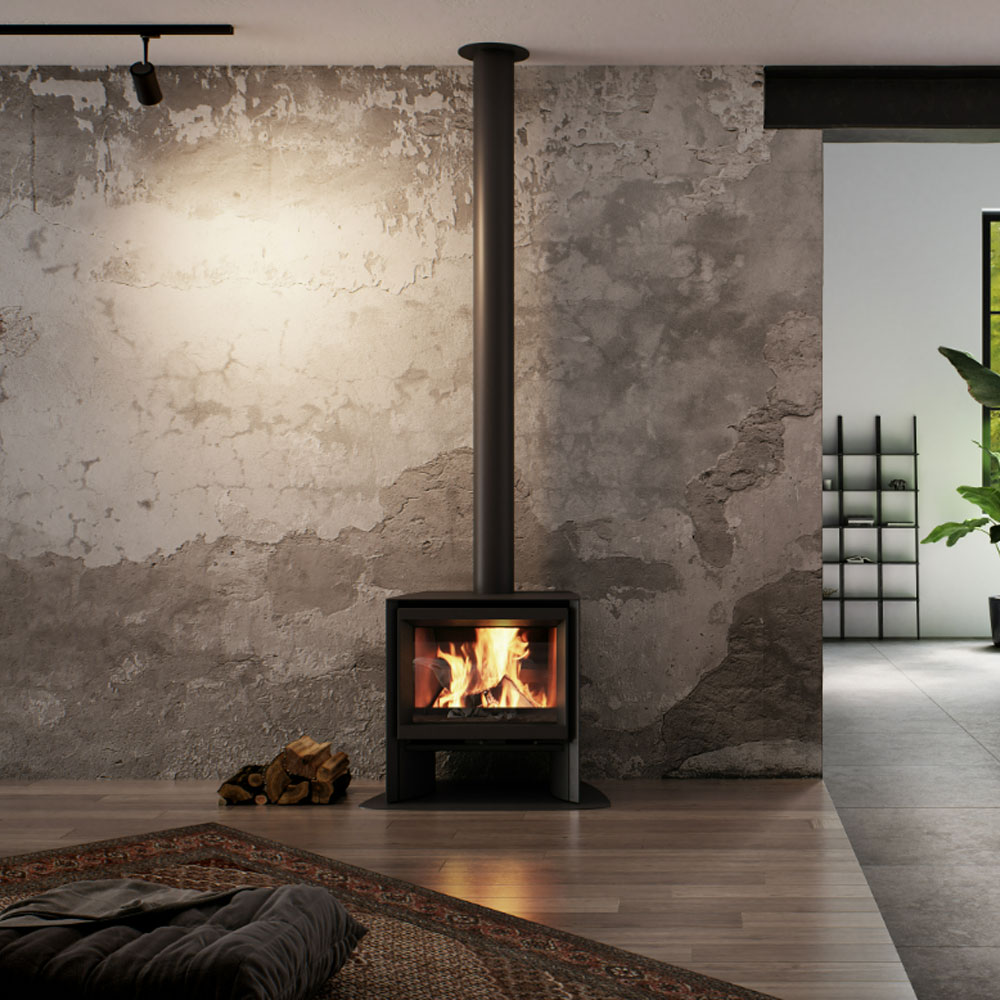Table of Contents
A wood-burning stove can provide warmth and a cozy ambiance to your home, but it also requires careful operation and regular maintenance to ensure safety and efficiency. Proper use and upkeep can prevent accidents, extend the life of your stove, and boost its performance.
Here’s a comprehensive guide on how to safely operate and maintain your wood-burning stove.
Safe Operation of Your Wood-Burning Stove
1. Proper Installation
Ensure your wood-burning stove is installed according to the manufacturer’s instructions and local building codes. Installation should only be handled by a certified professional to guarantee proper ventilation and placement, minimizing the risk of fire hazards. At Stonewoods, you can find Defra approved woodburners to ensure you find the right one for your needs.
2. Use the Right Fuel
Only burn dry, seasoned hardwoods like oak, maple, or ash. These woods produce more heat and less creosote buildup compared to softwoods or green wood, which can lead to dangerous chimney fires. Avoid burning treated wood, painted wood, or household trash, as they can release toxic fumes.
3. Control the Airflow
Proper airflow is crucial for efficient combustion and heat output. Adjust the air vents to regulate the oxygen supply. When there’s too much air, it can cause the fire to burn too hot, while too little air can lead to incomplete combustion and excessive smoke.
4. Never Overload the Stove
Overloading your wood stove can cause overheating and damage the stove’s components. Follow the manufacturer’s recommendations for the maximum amount of wood to burn at one time.
5. Install and Maintain Smoke and Carbon Monoxide Detectors
Place smoke and carbon monoxide detectors near your wood-burning stove and in other key areas of your home. Test each alarm regularly and replace batteries as needed to ensure they’re functioning correctly.
Regular Maintenance for Optimal Performance
1. Clean the Stove Regularly
Remove ash regularly to maintain proper airflow and efficiency. Leave a thin layer of ash at the bottom to insulate the stove and protect the base. Dispose of ash safely by placing it in a dedicated metal container with a lid and storing it outside, away from combustible materials.
2. Inspect and Clean the Chimney
Chimney maintenance is critical for preventing creosote buildup, which can lead to chimney fires. Have your chimney inspected and cleaned by a professional at least once a year, or more frequently if you use your stove regularly.
3. Check for Damage
Regularly inspect your wood-burning stove for any signs of damage or wear, such as cracks in the glass door, warped metal, or deteriorated gaskets. Replace damaged parts promptly to maintain the stove’s safety and efficiency.
4. Maintain the Door and Seals
Ensure that the door seals tightly to prevent air leaks, which can reduce efficiency and increase the risk of smoke entering your home. Replace worn or damaged gaskets to maintain a proper seal.
5. Clean the Glass Door
Soot and creosote can accumulate on the glass door, obstructing your view of the fire and reducing efficiency. Clean the glass regularly with a non-abrasive cleaner specifically designed for wood stoves.
6. Check the Firebricks
Firebricks line the interior of your wood stove and protect its metal components from excessive heat. Inspect the firebricks periodically for cracks or damage and replace them as needed to ensure optimal performance.
Tips for Safe and Efficient Burning
1. Build Small, Hot Fires
Small, hot fires produce less smoke and more heat, reducing creosote buildup and increasing efficiency. Avoid smoldering fires, which can lead to excessive creosote accumulation.
2. Use a Fire Screen or Doors
If your stove has a glass door, keep it closed while the fire is burning to contain sparks and embers. If using an open fireplace, always use a fire screen to prevent embers from escaping into your home.
3. Monitor the Stove
Never leave a wood-burning stove unattended for long periods. Monitor the fire and adjust the airflow as needed to maintain a steady, controlled burn.
4. Store Firewood Properly
Store firewood in a dry, covered area to ensure it remains seasoned and ready for burning. Wet or green wood produces more smoke and less heat, leading to inefficient burning and increased creosote buildup.
Wrapping Up!
Operating and maintaining a wood-burning stove safely requires diligence and regular attention. By following these guidelines for proper use and upkeep, you can enjoy the warmth and ambiance of your wood stove while minimizing risks and ensuring efficient performance. Regular maintenance, including cleaning and inspections, is essential to keep your stove functioning safely and effectively for years to come.
